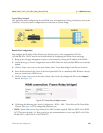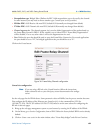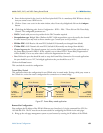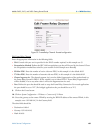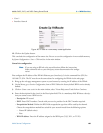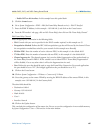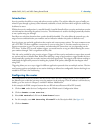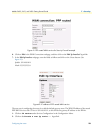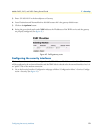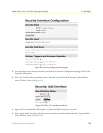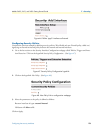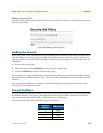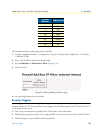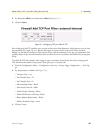
Introduction 69
Models 2603, 2621, and 2635 Getting Started Guide 7 • Security
Introduction
Security provides the ability to setup and enforce security policies. The policies define the types of traffic per-
mitted to pass through a gateway, either inbound, outbound, or both, and from which origins the traffic may
be allowed to enter.
Within the security configuration is a stateful firewall. A stateful firewall utilizes a security mechanism to main-
tain information concerning the packets it receives. This information is used for deciding dynamically whether
or not a packet may pass through.
Port filters are rules that determine how a packet should be handled. The rules define the protocol type, the
range of source and destination port numbers and an indication whether the packet is allowed or not.
Security triggers are used with applications that require and create separate sessions. The most common exam-
ple is FTP. An FTP client establishes a connection to a server using port 21, but data transfers are done on a
separate connection or port. The port number, and who makes the connection, can vary depending on the
FTP client. To allow FTP to work without triggers, you would need to set up port filters allowing the correct
port numbers through. This is a significant security risk.
This risk can be avoided by using security triggers. Triggers tell the security mechanism to expect these second-
ary sessions and how to handle them. Rather than allowing a range of port numbers, triggers handle the situa-
tion dynamically, opening the secondary sessions only when appropriate. The triggers work without needing to
understand the application protocol or reading the payload of the packet, although this does happen when
using NAT.
Triggering allows you to set up a trigger for different application protocols that use multiple sessions. The tim-
eout between sessions and whether or not session chaining are allowed are configurable. Session chaining is not
needed for FTP but is for NetMeeting.
Configuring the router
The configuration of security assumes that the IPLink router has been configured with a valid IP address for
the Ethernet port so that the user may access the modem via the web page. If the IP address is still the factory
default, go to the section in Chapter 3 entitled IP Address Modification.
In this example the WAN transport between the two IPLink router/Routers will be PPP (routed).
1. Click on WAN under Services Configuration in the IPLink router’s Configuration Menu.
2. Click on Create a new service....
3. Select PPP routed and click on the Continue=> button.
4. For this example, enter PPP Security Firewall in the Description field. (See figure 41.)
5. Click on Create.



